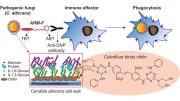
A groundbreaking study reveals that two key brain regions, previously thought to be dedicated to language processing, are actually more involved in social-semantic working memory, challenging traditional views on language and social cognition.
A study conducted by Professor LIN Nan and his team at the Institute of Psychology of the Chinese Academy of Sciences revealed that while processing sentences, the brain activity in two canonical language regions, specifically the left ventral temporoparietal junction (vTPJ) and the lateral anterior temporal lobe (lATL), is associated with social-semantic working memory rather than language processing per se.
The study was recently published in the journal Nature Human Behaviour.
Linking Language and Social Cognition
Language and social cognition are two deeply interrelated abilities of the human species but have traditionally been studied as two separate domains. Both sentence processing and social tasks can evoke neural activity in the left vTPJ and lATL, suggesting that the function of these regions may link language comprehension with social cognition.
However, previous studies have attributed the activity of these regions in language tasks to general semantic and/or syntactic processing, whereas their activity in social tasks is attributed to social concept activation.
New Hypothesis and Methodology
In this study, the researchers tested a novel hypothesis that the activity of the left vTPJ and lATL in language and social tasks are both due to a common cognitive component—i.e., social-semantic working memory.
Using fMRI experiments, they validated that these regions were sensitive to sentences only if the sentences conveyed social meaning. In addition, these regions showed persistent social-semantic-selective activity after the linguistic stimuli disappeared and were sensitive to the sociality of nonlinguistic stimuli.
Furthermore, these regions were more tightly connected to the social-semantic-processing areas than to the sentence-processing areas.
Implications and Support
The results indicate that the left vTPJ and lATL are not specific to language processing and contribute to language comprehension through social-semantic working memory.
“Since the 1990s, it has been consistently observed that the left vTPJ and lATL are sensitive to sentence processing. Therefore, our findings were quite surprising,” said Prof. LIN, corresponding author of the study.
These findings are likely to force a major reconsideration of the functional organization of the cortical language network, and they also make an important new contribution to the field of social neuroscience, according to a reviewer for Nature Human Behaviour.
Reference: “A social-semantic working-memory account for two canonical language areas” by Guangyao Zhang, Yangwen Xu, Xiuyi Wang, Jixing Li, Weiting Shi, Yanchao Bi and Nan Lin, 21 September 2023, Nature Human Behaviour.
DOI: 10.1038/s41562-023-01704-8
This study was supported by the National Natural Science Foundation of China, the Scientific Foundation of the Institute of Psychology, and the National Science and Technology Innovation 2030 Major Program.









Be the first to comment on "Unraveling Brain Secrets: Scientists Probe the True Role of Key Cognitive Regions"